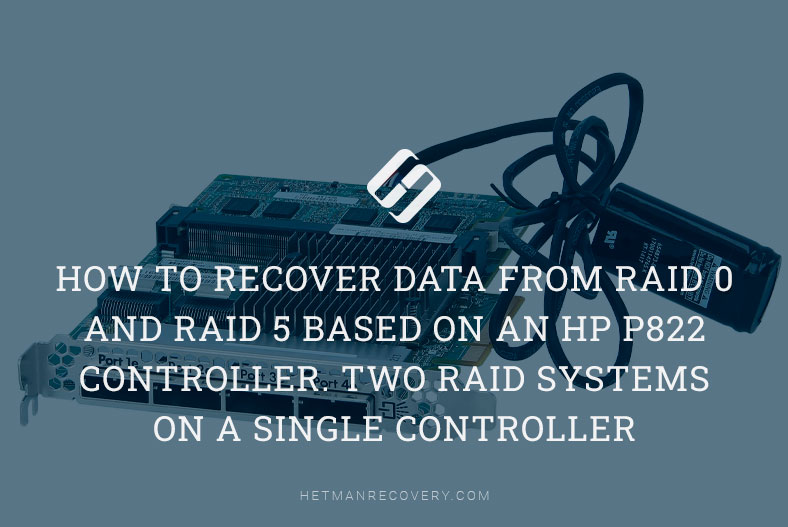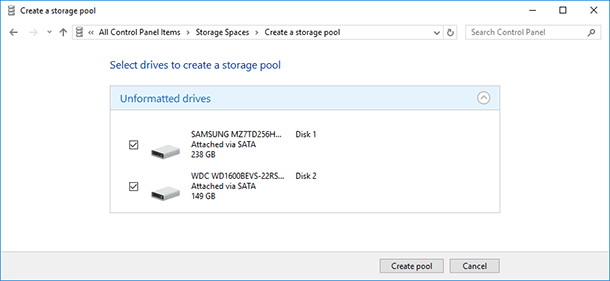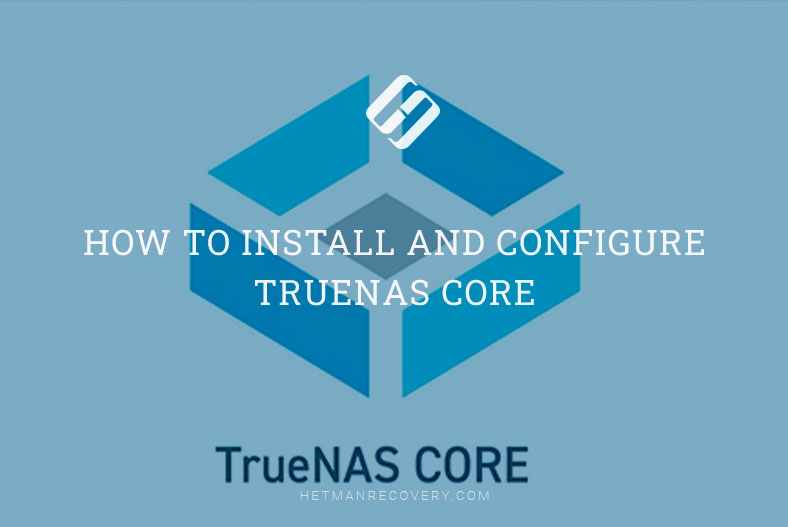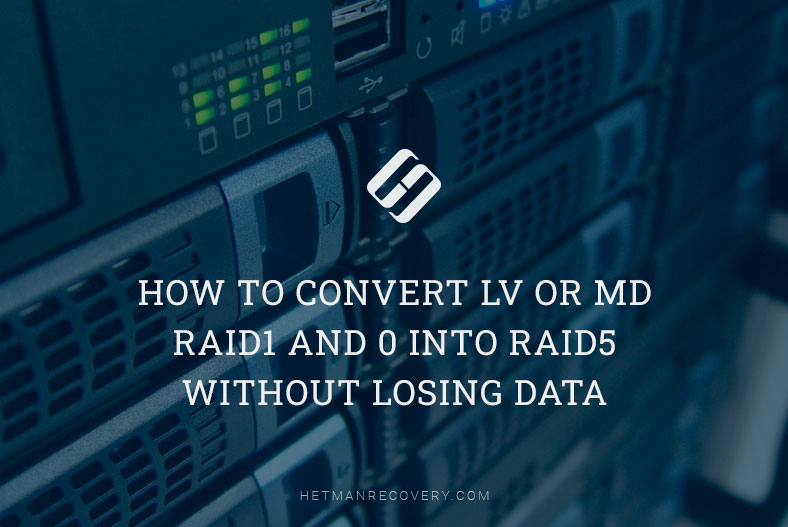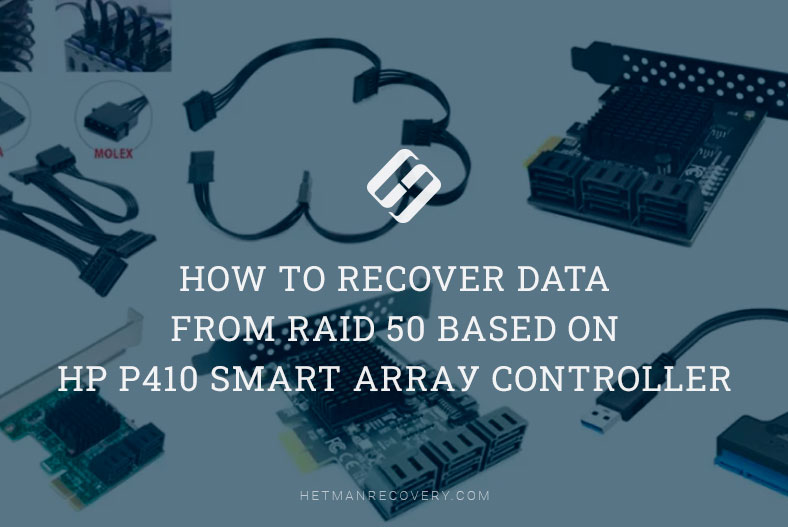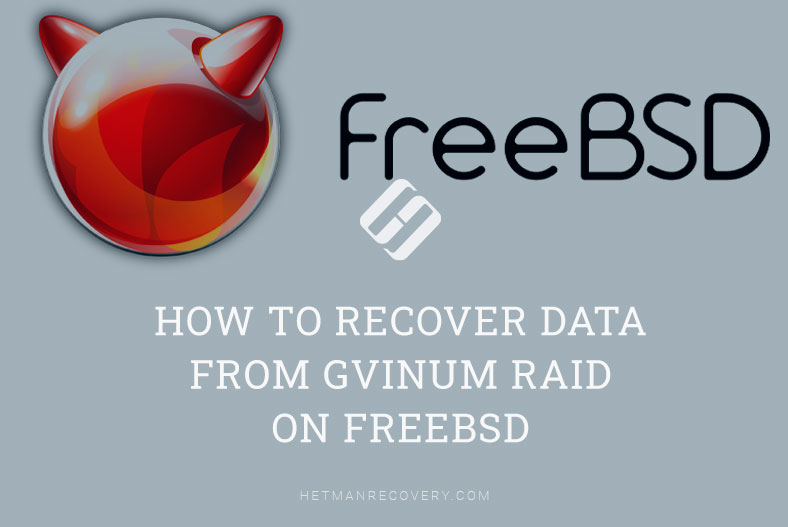Rescuing Data from RAID Systems: Solutions for a Faulty LSI MegaRAID SAS 84016E Controller
In this article, learn how to recover data from a RAID system with a faulty LSI MegaRAID SAS 84016E controller. Whether you’re a system administrator or a user facing data loss due to a RAID failure, we’ll walk you through the entire recovery process step by step. From identifying the issue to implementing effective recovery strategies, this tutorial equips you with the knowledge and tools needed to successfully retrieve your valuable data and minimize downtime.
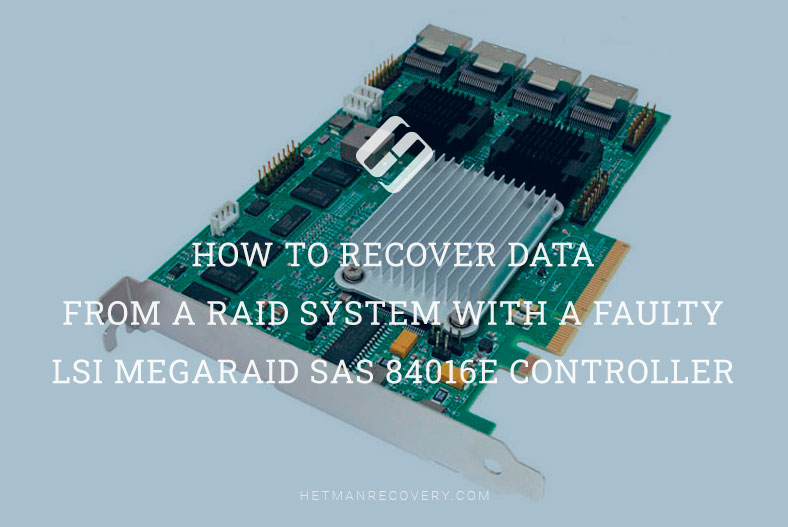
- 1. How to build a RAID 5 on LSI MegaRAID SAS 84016E controller
- 2. How to recover data from a crashed RAID 5 system on LSI MegaRAID SAS 84016E controller
- 3. How to build a RAID manually after the configuration was erased
- 4. Conclusion
- Questions and answers
- Comments
RAID arrays are an effective method to ensure safety and reliability of data storage which allows combining several hard disks into one logical volume and distributing data across them.
The LSI MegaRAID SAS 84016E controller plays a crucial role in building a RAID system as well as in ensuring data integrity and availability. However, just like any other device, this controller may break down one day. Losing access to data on a disk array when the controller breaks down is a severe problem especially when you store valuable or necessary files on that disk array.

How to Recover Data from a RAID System with a Faulty LSI MegaRAID SAS 84016E Controller
1. How to build a RAID 5 on LSI MegaRAID SAS 84016E controller
For better understanding of how the RAID technology works, let’s explore the process of creating it on LSI MegaRAID SAS 84016E controller. Creating a RAID is the initial step to ensure data safety and improve system performance. This process will unite hard disks into a single logical volume which allows to spread the data across all drives and enhance the reliability of data storage.
Building a RAID on this device – LSI MegaRAID SAS 84016E controller – is implemented through the controller’s BIOS. To access it, press the key shortcut Ctrl + H when the server is booting. When you do it, you will see the LSI BIOS window.

Then click Start to continue. Go to the Configuration Wizard.
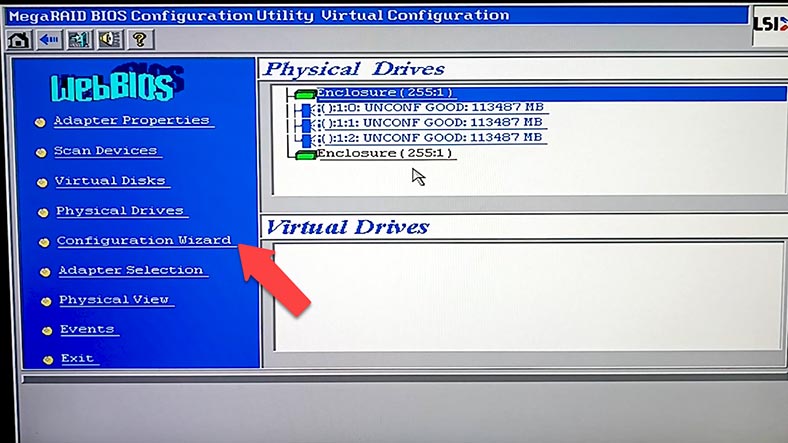
In the wizard window, choose New Configuration and click Next. You will see a warning that the current configuration will be cleared and all data will be lost. Click Yes to continue.
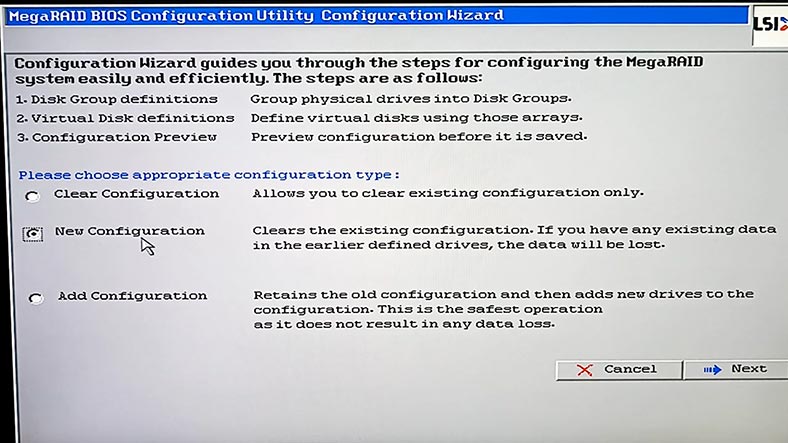
Now choose the RAID configuration method – manual or automatic – and click Next.
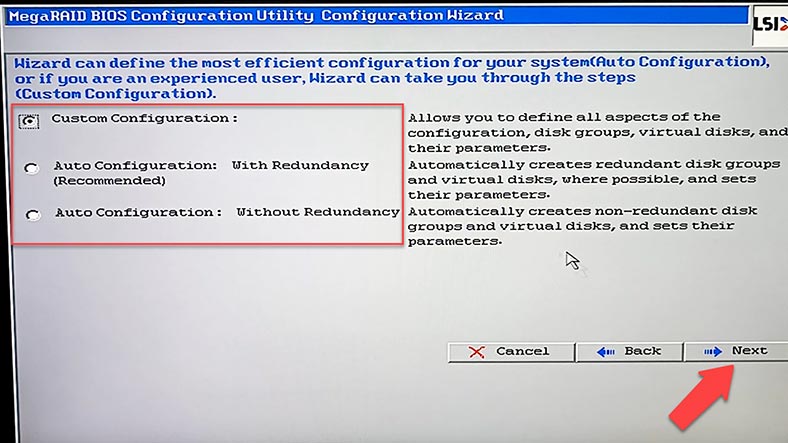
Choose the disks to include into the array and click on the Add button. Now the hard disks will be added to a virtual group. Click Accept DG to confirm it, and then Next.
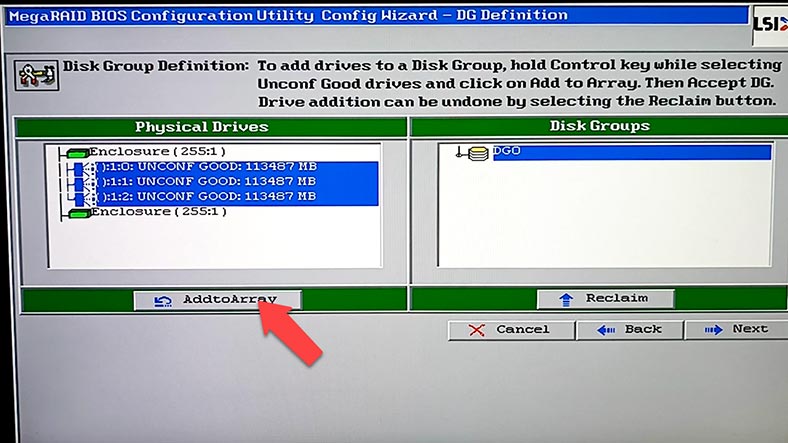
Now add this group to SPAN by selecting the option Add to SPAN, and then click Next.
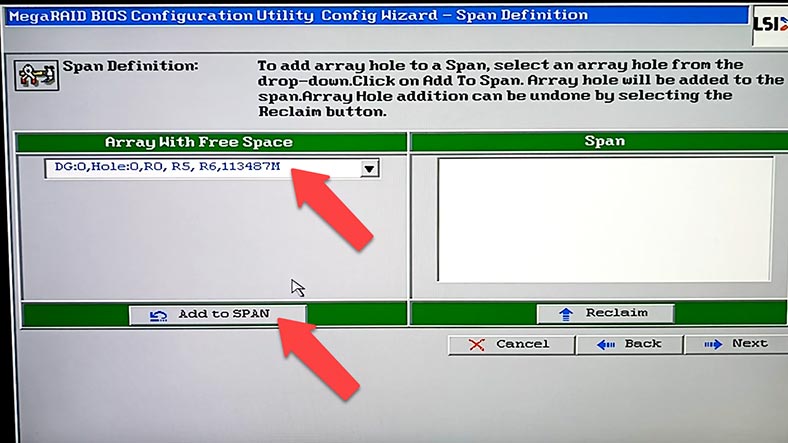
At the next stage, choose RAID level, strip size, read and write policy settings, cache properties and other options. When all the settings are ready, set the volume size; on the right, you can see the full size for every RAID level. After that, click Accept and Next. Click Accept and Yes to save this configuration.
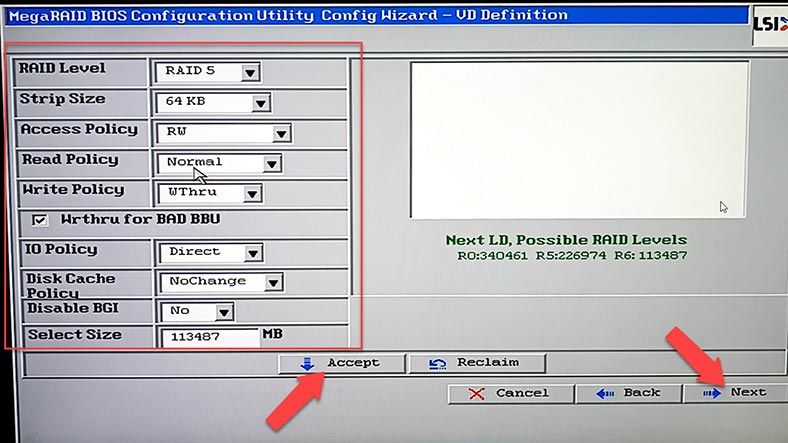
Now click Yes one more time to initialize the drives. This will typically start fast initialization, but if you need to wipe the drives completely, select Slow Initialize and click Go.
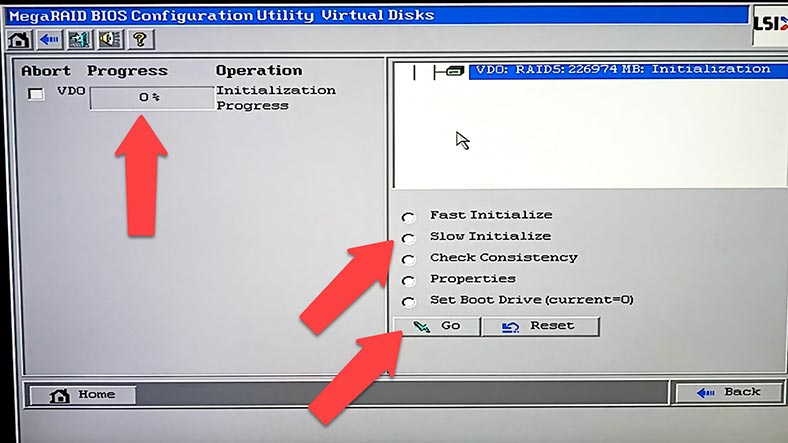
The RAID has been created! The last step to take is to restart the computer. Further actions will include drive partitioning, access configuration and so on.
2. How to recover data from a crashed RAID 5 system on LSI MegaRAID SAS 84016E controller
If you lost access to the disk array because of controller breakdown, there are a few ways of retrieving your data. For starters, you need to make sure if there is a problem with the controller. As soon as you know that the controller is out of order, you can start the recovery operations.
The first data recovery method to use if the LSI MegaRAID SAS 84016E controller is dead is to connect the disks to a properly working controller. For this method you will need one more controller of the same model, or a compatible one which enables you to import the previously existing RAID configuration. First of all, you should thoroughly examine this aspect to make sure that the data recovery operation is not going to damage your data. Wrong actions may result in losing the remaining files forever.
The second method to recover data involves specialized data recovery software which can work with RAID systems.
Hetman RAID Recovery supports all popular RAID types, most file systems and various array patterns used by numerous RAID controllers. The app will rebuild the damaged RAID with the available hard disks, so that you’ll be able to retrieve important files.
For data recovery, you will need to connect the disks to the motherboard of a Windows computer.
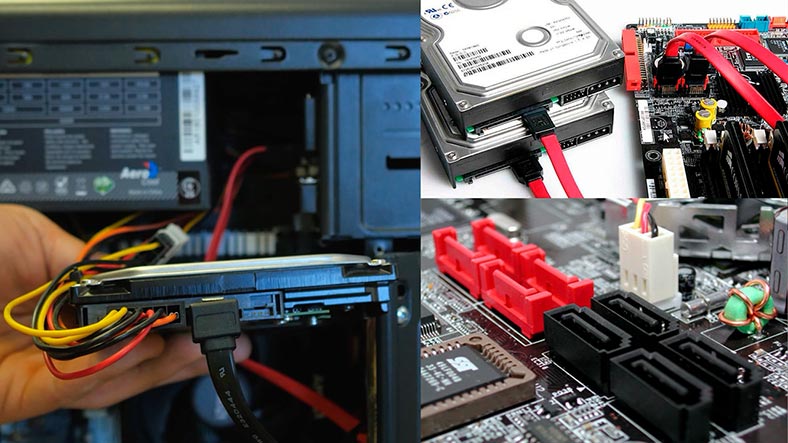
As you can see, the program has rebuilt the crashed array automatically. Depending on the RAID level, it can also rebuild a RAID system even if one or several disks are missing. For RAID 5 it’s one disk, and for RAID 6 – two disks.
If your motherboard has less SATA ports or power connectors than necessary, you can use additional adapters and expansion cards – like the ones shown on the screen.
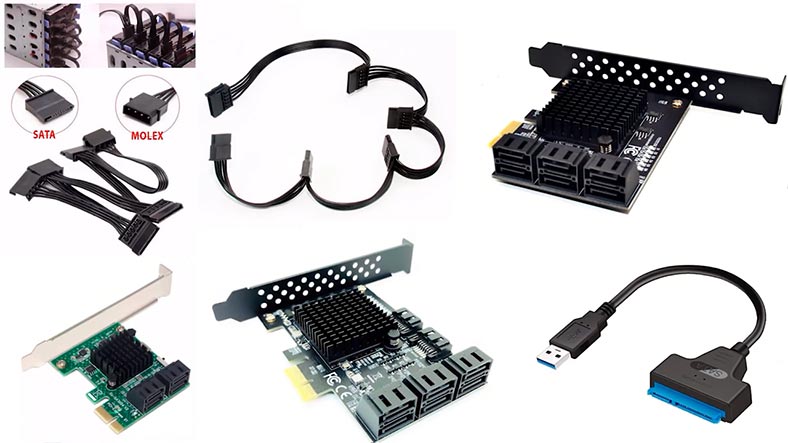
Select the RAID in the Drive Manager and check if the program managed to rebuild it correctly. It shows brief information about its properties. To get more detailed information, right-click on the array and open its properties. In the RAID tab, you can view all information about the array including the hard disks, their order, offset and so on.
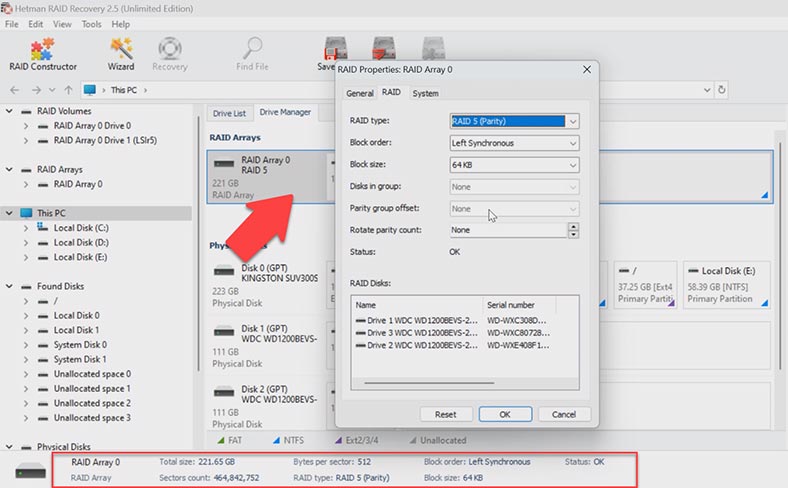
If everything is correct, right-click on the volume and choose Open. After that, choose the scan type – Fast scan or Full analysis. If the controller has just broken down, a Fast scan is enough, and it takes less time.
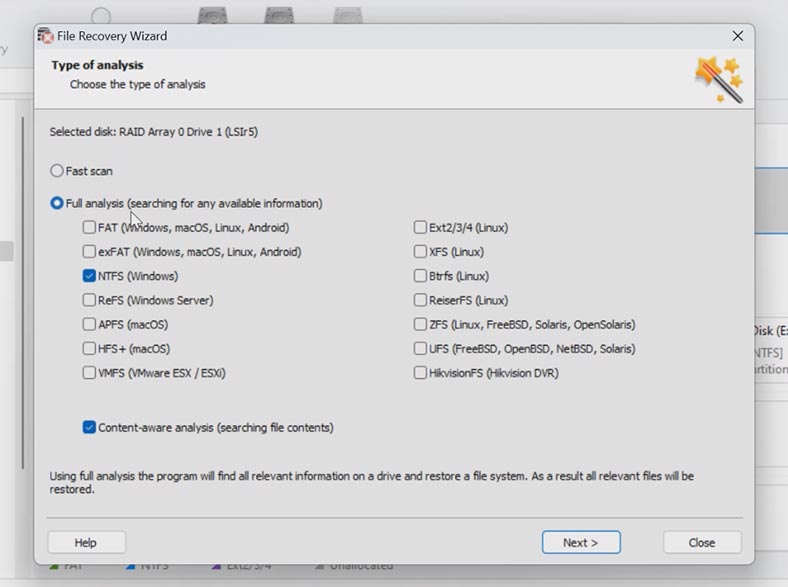
If the program can’t find the missing files after the Fast scan, then go for Full analysis. To do it, go back to the main window, right-click on the volume and choose – Analyze again – Full analysis – specify the file system and click Next.
In my case, the program has coped with the task easily. It has rebuilt the RAID automatically and found all the files which were stored on this disk array. In addition, the program has also shown the deleted files which are marked with a red cross.
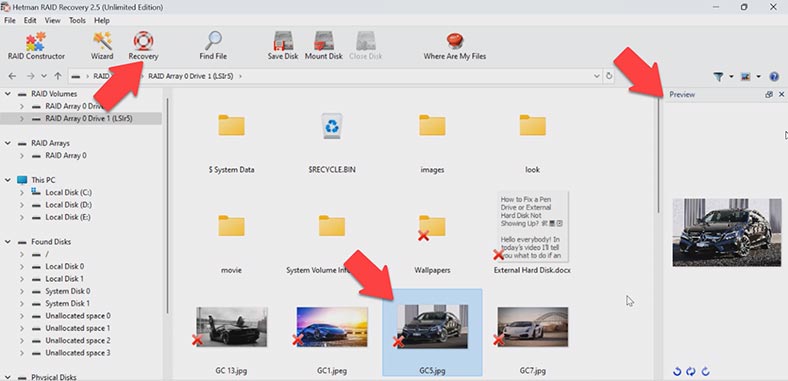
Select all the items you want to recover and click the Recovery button. Specify where to save the data (choose the disk and folder). And click Recovery again. When the recovery process is complete, you’ll see all the files in the specified directory.
3. How to build a RAID manually after the configuration was erased
In some situations, the program may fail to rebuild the RAID automatically. It can happen when the service information on the disks is erased, so the program cannot identify parameters of the crashed RAID. In such cases, the RAID Constructor with a manual build feature will help you.
This tool will save the day when the disk beginning is erased, together with the information about the array parameters. This is what typically happens when disks are connected to another controller and the previous configuration is erased or when the RAID is rebuilt.
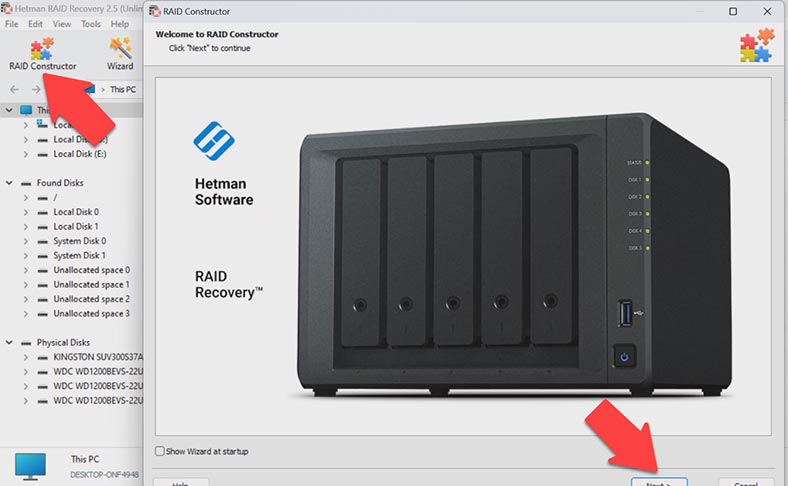
If you know the array parameters, start the Constructor, choose Manual Mode – Next. Specify the array type, block order and size. Add the disks it used to include, and replace the missing disks with empty drives by clicking the “plus” button.
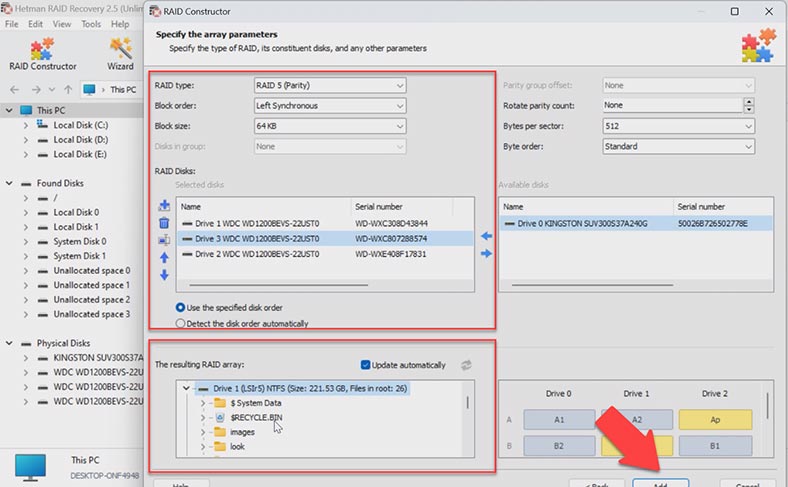
You may have to specify the offset which tells you where the beginning of the disk is located. When you have entered all the parameters you know, you will see your RAID, and if all information is correct, you will see its folders here. Fill in all the properties, and click Add. After that, the RAID system will appear in the Drive Manager. Now start the scan, search for files, and recover the ones you need.
4. Conclusion
As you have already understood, data recovery from a crashed RAID may become a challenging task, which depends primarily on the how much it is damaged. The right choice of data recovery tools combined with confidence is the key to successful data recovery from a damaged RAID system on a faulty controller.
Choose well-tested and reliable software like Hetman RAID Recovery which is designed specifically for restoring data from RAID arrays. Also, remember to follow instructions and recommendations when using this tool to minimize the risk of data loss.
| Program | Supported RAID Types | Platforms | Features |
|---|---|---|---|
| Hetman RAID Recovery | RAID 0, 1, 4, 5, 6, 10, JBOD | Windows | File system support: NTFS, FAT, exFAT, ReFS, HFS+, Ext2/3/4, Btrfs, XFS; Automatic RAID configuration recognition; Recovery of damaged or formatted arrays; File preview before recovery |
| R-Studio | RAID 0, 1, 4, 5, 6, 10 | Windows, Mac, Linux | Automatic RAID configuration recognition; Support for various file systems; Disk imaging |
| DiskInternals RAID Recovery | RAID 0, 1, 5, 6, JBOD | Windows | Recovery of damaged arrays; Support for various file systems; Data recovery without a RAID controller |
| EaseUS Data Recovery Wizard | RAID 0, 1, 5, 10 | Windows, Mac | User-friendly interface; Recovery after formatting or system failure |
| Stellar Data Recovery | RAID 0, 1, 5, 6, 10 | Windows, Mac | Recovery from various RAID types; File preview; Support for various file systems |
| UFS Explorer RAID Recovery | RAID 0, 1, 4, 5, 6, JBOD | Windows, Mac, Linux | Support for various RAID types; Recovery of damaged arrays; Disk imaging |



